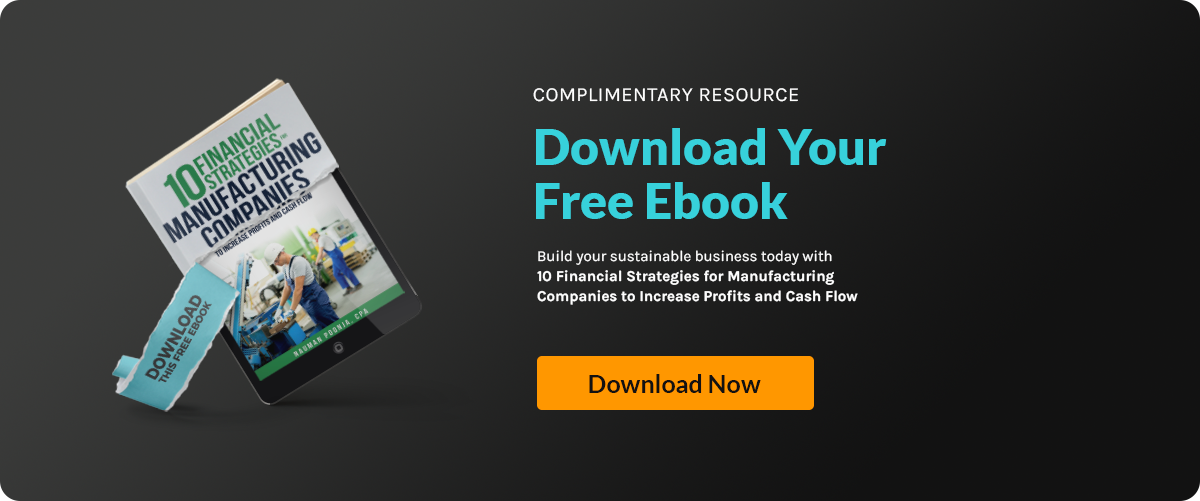Bookkeeping might seem like a behind-the-scenes operation, but for manufacturers, it plays a...
Understanding the Significance of Payback Period in Manufacturing Investments

In manufacturing, capital investments are both frequent and substantial—from machinery upgrades and automation tools to ERP system implementations. Each of these decisions carries risk, and manufacturers need clear metrics to assess how soon they will recover their upfront costs. That’s where the payback period becomes an essential tool in the financial decision-making process.
This blog breaks down what the payback period is, why it matters for manufacturers, how to use it in capital budgeting, and where it fits in broader financial strategy.
What Is the Payback Period?
The payback period is the amount of time it takes for an investment to generate enough net cash inflows to recover its original cost. For example, if a $100,000 equipment upgrade yields $25,000 in annual savings or returns, the payback period is four years.
It’s a straightforward metric that offers a quick assessment of risk and liquidity—ideal for comparing competing investments or justifying capital expenditures where time-to-return is critical.
Why Payback Period Matters in Manufacturing
Manufacturing businesses operate on thin margins and capital-intensive operations. When assessing investments like robotics, new production lines, or sustainability retrofits, knowing how quickly the investment pays back helps:
- Preserve liquidity
- Minimize risk in uncertain market environments
- Prioritize projects with faster returns
- Support lean, agile decision-making in dynamic production settings
While other metrics like ROI or Net Present Value offer long-term views, the payback period speaks to short-term cash recovery, making it highly relevant for cash flow-focused manufacturers.
Real-World Application Example
A mid-sized metal fabrication company used payback analysis to evaluate a $300K laser cutter upgrade. With a projected payback of just 3.5 years, the investment was fast-tracked—resulting in a 20% boost in throughput and reduced overtime costs. The clear recovery window gave both the CFO and plant manager confidence to move forward despite uncertain demand forecasts
Practical Applications in Capital Planning
Manufacturers use the payback period for decisions such as:
- New machine purchases
- Process automation upgrades
- Energy-efficiency retrofits
- Inventory management software or ERP transitions
In each case, the payback period gives clarity on how long it will take for the business to recoup its outlay and begin realizing profit. That’s why many manufacturers build it directly into their capital planning processes.
It’s also helpful when modeling multiple investment options using cost-volume-profit analysis to determine breakeven points.
Payback Period Formula and Example
The basic formula is:
Payback Period = Initial Investment ÷ Annual Net Cash Inflow
Example:
- A new packaging machine costs $150,000
- It generates annual savings of $30,000 in labor and waste reduction
- Payback Period = $150,000 ÷ $30,000 = 5 years
This tells you it will take five years before you break even on the investment.
Comparison with Other Investment Metrics
|
Metric |
Result |
Comment |
|
Payback |
4 years |
Doesn’t capture post-ROI profit |
|
NPV |
$80,000 |
Includes time value of money |
|
IRR |
18% |
Shows annual return efficiency |
This table shows how the payback period complements, but doesn’t replace, more comprehensive investment evaluations.
Strengths of the Payback Period Method
- Simplicity: Easy to calculate and explain to stakeholders
- Liquidity-focused: Prioritizes investments with faster cash recovery
- Risk-awareness: Shorter payback often means lower exposure
- Useful for screening: Effective in the early stage of project evaluation
It’s particularly useful for businesses managing cash flow challenges, where the timeline of return matters as much as the total return.
Limitations You Shouldn’t Ignore
Despite its utility, the payback period has drawbacks:
- Ignores returns after breakeven: It doesn’t measure total profitability
- No time value of money: A dollar today and a dollar five years from now are treated equally
- Doesn’t account for risk variability over the investment lifespan
That’s why it should be paired with metrics like Net Present Value (NPV) or Internal Rate of Return (IRR), especially in financial forecasting for capital expenditures.

Understanding the Discounted Payback Period
For manufacturers seeking greater precision, the discounted payback period offers a more financially rigorous alternative. It accounts for the time value of money by discounting future cash flows before calculating the payback.
This is especially useful in:
- Long-term projects with multi-year ROI horizons
- Inflation-sensitive environments
- High-interest or high-risk markets
While more complex, discounted payback gives a clearer picture of when value is actually recaptured.
Strategic Role in Financial Decision-Making
In the context of long-term strategy, the payback period contributes to:
- Comparative analysis of multiple investments
- Risk-adjusted budgeting
- Board-level investment approvals
It's also useful when evaluating budgeting strategies for expansion, where liquidity and timing influence go/no-go decisions.
Additionally, companies aiming to scale manufacturing profitably often use payback analysis to avoid overextending capital too quickly. It also supports broader performance measurement by tying into financial KPIs and capital efficiency ratios.
Understanding the significance of the payback period allows financial leaders in manufacturing to align investment decisions with cash flow cycles, market timing, and broader ROI objectives.
Conclusion: A Simple Yet Strategic Tool
The payback period is more than just a basic math exercise—it’s a strategic lens through which manufacturers can evaluate the speed of return on capital investments. When used correctly, it enhances capital discipline, sharpens financial clarity, and supports more resilient decision-making.
If your business is reviewing multiple investment proposals, upgrading machinery, or considering automation, make sure the payback period is part of your toolkit.
For a deeper dive into linking it with forecasting, cost control, and margin strategy, connect with Accounovation for expert financial insight.






